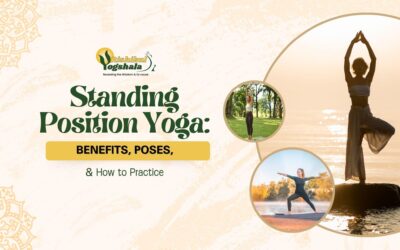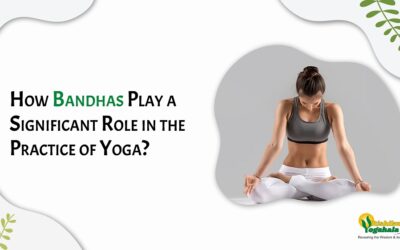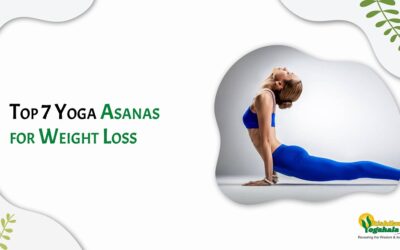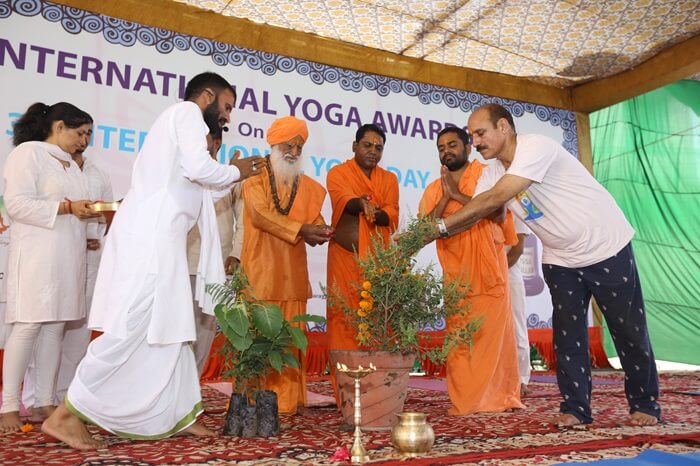Your extensive Guide to Yoga:
Health, Wellness, Retreats, and More
Yoga Blogs and Tips
Standing Position Yoga: Benefits, Poses, and How to Practice
Yoga as a practice is very good for the mind, body, and soul. It helps to remove stress and enhance mental well-being. While yoga will surely improve flexibility, it’s also a great way to build strength and stability in the body. In yoga, not all poses may improve...
How Bandhas Play a Significant Role in the Practice of Yoga?
Understanding Bandhas: The Key to Unlocking Your Energy Flow In the realm of muscle enhancement, one crucial lesson is the Law of Energy Balance. This principle asserts that every person possesses an inner force that must be harnessed correctly. The source of this...
Top 7 Yoga Asanas for Weight Loss
Achieve Your Weight Loss Goals with Yoga Start your exercise with an ambitious goal to lose weight. It's a personal choice to lose weight or to gain weight; nobody is obligated to engage in an activity that’s not desirable for them. This blog is directed towards...
Enjoy These 5 Excellent Benefits of Marichyasana
Marichyasana: Mastering the Pose for Enhanced Health and Flexibility In the yogic system, certain asanas have gained prominence over time due to their unique characteristics and health benefits. Marichyasana, which translates from Sanskrit as "a ray of light" is one...
What Is The Importance Of Yoga In Our Daily Life?
The Importance of Yoga in Today's Fast-Paced World Life is increasingly hectic, and many of us have become almost robotic—mentally, physically, and emotionally. We chase after money more fervently than we nurture our relationships. We subject ourselves to grueling...
Balancing Yin and Yang Embrace these Yoga Practices to Keep Your Energies Balanced
Balancing Yin and Yang with Yoga Practices The Chinese symbol of yin and yang, known as Piebald Taijitu, represents the balancing fusion of opposites. The light half, symbolizing yang, is dynamic, warming, upward, and external. Conversely, the dark half represents...
How To Do Sirsasana?
Today, we'll discuss Sirsasana, also popularly known as the headstand. They say it is the "king of asanas" because of its multiple health benefits and the level of mastery needed to perform this very asana. So, if you want to add this pose to your yoga routine, you...
How to Find Self-Awareness in Your Meditation Practice
Is Meditation Part of Yoga, or Is Yoga Part of Meditation? The relationship between meditation and yoga often sparks debate: Is meditation a part of yoga, or is yoga a part of meditation? Instead of delving into this debate, let’s focus on exploring how meditation can...
Top 7 Yoga Poses For Hip Exercises
The Importance of Healthy Hips: 7 Yoga Poses to Strengthen Your Hips The human body is a marvel of scientific and strategic design, yet we often overlook its amazing capabilities. We sit, stand, walk, dance, and lift objects, assuming that these actions are solely the...
5 Yoga Poses to Self-Empowerment for Women
Empower Yourself with Yoga: A Tribute to Strong Women This blog is dedicated to all the fearless, independent, funny, humble, loving, and resilient women across the globe. Embrace this moment to feel empowered through Yoga Poses. Discover how Yoga can be your path to...
Yoga for Youthfulness: Top 7 Poses to Look Young and Beautiful
Here are some effective yoga poses that can help you look young and beautiful Yoga is not just a practice for physical fitness and mental well-being; it is also a powerful tool to maintain youthfulness and enhance natural beauty. The ancient art of yoga can help you...
Effective Yoga Poses to Correct Bad Posture and Improve Alignment
Here Are Seven Effective Yoga Poses To Help You Achieve Better Posture And Alignment. In today's world, where many people spend hours sitting at desks or staring at screens, poor posture and misalignment have become common issues. Bad posture can lead to a variety of...
Popular Categories























